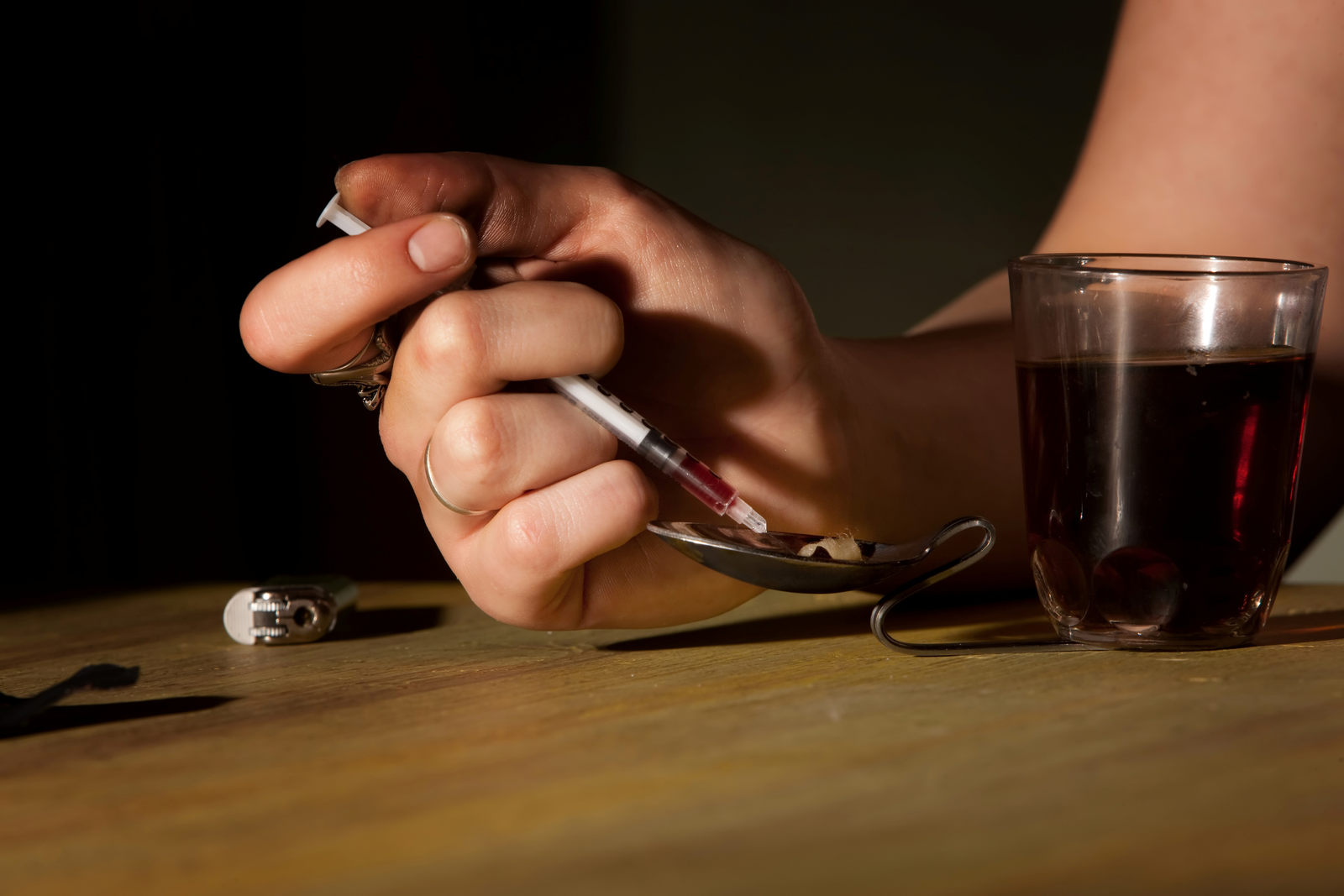Black Tar Heroin: Effects and Risks
Medically Reviewed By:
Written By:
Updated On: May 19, 2025
Last Medically Reviewed on: May 19, 2025

Table of Contents
Key Points
- Black tar heroin is a crude form of heroin that’s popular west of the Mississippi River in the U.S. and Canada.
- Though black tar is viewed as less pure than white powder heroin, it’s no less potent or dangerous.
- Black tar heroin has similar risks to white powder heroin, including possible addiction and overdose, as well as rare medical complications.
- Treatment for black tar heroin addiction with individualized treatment plans can be effective for overcoming opioid use disorder.
Black tar heroin is a form of the illicit drug that’s typically used west of the Mississippi River.[1] Like heroin, black tar heroin is produced by Mexican drug cartels but comes in a less pure, but equally potent, form.[2]
Learn more about the effects, risks, and potential complications of black tar heroin use, including the risk of addiction and recommended addiction treatment.
What Is Black Tar Heroin?
Black tar heroin is a crude form of the illicit opioid heroin that’s produced in Mexico. It’s black and sticky, leading to its slang name. It’s also referred to as Mexican black tar heroin because it’s a major export for cartels. Most black tar heroin is found west of the Mississippi River in the U.S. and Canada.
Because black tar heroin is cruder and less pure than white, powder heroin form of the drug, many mistakenly believe it’s less potent. This can lead to overdoses as people take more to compensate for the perceived difference.[3] Black tar heroin is a sticky, black substance that is typically dissolved and heated to a liquid form for intravenous use. It’s typically smoked or ingested in other ways.
Effects of Black Tar Heroin
Black tar heroin has the same effects as other forms of heroin, despite widespread misconceptions about its potency. It’s cheaper and faster to produce, but this can lead to issues with purity and additional risks.
Some of the effects of heroin include:[4]
- Euphoria (“rush”)
- Warm flushing of the skin
- Dry mouth
- Heavy feeling in the extremities
- Nausea
- Vomiting
- Severe itching
Once the initial effects become less intense, drowsiness, mental cloudiness, slowed heart rate, and slowed breathing occur, which can be life-threatening in some cases.
The long-term effects of black tar heroin are also the same as white powder heroin, including:[5]
- Insomnia
- Stomach cramps
- Liver and kidney disease
- Lung damage
- Mental disorders
- Damaged tissue
- Infection of the heart lining and valves
- Abscesses
- Constipation
- Erectile dysfunction in men
- Irregular menstrual cycles in women
Black tar heroin has an additional risk that’s limited to this form. Though rare, wound botulism has been seen in people who use black tar heroin in a practice called “skin popping,” or injecting the drug subcutaneously (under the skin). The symptoms of wound botulism can include muscle weakness, difficulty swallowing, blurred vision, drooping eyelids, slurred speech, difficulty breathing, loss of facial expression, or descending paralysis.[6] Rapid treatment is important, but wound botulism can be missed because its symptoms are similar to opioid toxicity (overdose).
Black Tar Heroin Overdose
An overdose occurs if you take more of the drug than your body can handle. A black tar heroin overdose is similar to a white powder heroin overdose. However, people often take higher doses of black tar heroin because of the belief that it’s less potent than “pure” heroin, increasing the risk of overdose.
Some of the signs of a heroin overdose include:[7]
- Shallow or no breathing
- Bluish lips and nails
- Low blood pressure
- Weak pulse
- Dry mouth
- Discolored tongue
- Uncontrollable muscle movements
- Very small pupils
- Extreme drowsiness
- Delirium
- Stomach or intestinal spasms
- Coma
- Death
A heroin overdose is a medical emergency and requires rapid intervention. Naloxone, an opioid antagonist, can be administered to restore normal breathing during an opioid overdose. Multiple doses can be used to help reverse the overdose.
Black Tar Heroin Abuse and Addiction
Addiction to black tar heroin occurs in the same way as white powder heroin. The intense effects occur with the first use, stimulating the opioid receptors and creating strong euphoria that reinforces its use.
Heroin addiction is classified as an opioid use disorder in the Diagnostic and Statistical Manual of Mental Disorders (DSM-5) with the following criteria:[8]
- Taking larger amounts of heroin or taking heroin over a longer period than intended
- A persistent desire or unsuccessful efforts to cut down or control opioid use
- Spending a great deal of time in activities necessary to obtain, use, or recover from heroin
- A craving for heroin
- Recurrent heroin use leading to failure to fulfill responsibilities at work, home, or school
- Continued heroin use despite persistent or recurrent social or interpersonal problems caused by the effects of heroin
- Giving up important social, occupational, or recreational activities because of heroin use
- Recurrent heroin use in dangerous situations
Black Tar Heroin Withdrawal
Even short-term use of heroin can cause dependence, which means the body has become used to the presence of the drug and needs it to function properly. If you become dependent on heroin and abruptly stop using it, intense withdrawal symptoms may occur:[9]
- Aches and pains
- Anxiety
- Fever
- Chills
- Dilated pupils
- Vomiting
- Diarrhea
- Insomnia
- Intense cravings
- Elevated heart rate and blood pressure
- Sweating
Though heroin withdrawal is not typically life-threatening, severe symptoms can lead to complications such as dehydration, electrolyte imbalances, and an increased risk of relapse. Severe, prolonged vomiting and diarrhea can also cause dehydration and electrolyte imbalances that can lead to dangerous medical complications, so you should never stop taking heroin “cold turkey” or try to detox at home without medical supervision.
Treating Black Tar Heroin Addiction
Heroin addiction is extremely difficult to overcome, no matter its form or how it’s used. The drug is potent and causes intense euphoria that reinforces its use, and the severe withdrawal can significantly increase the risk of relapse. If you or a loved one is struggling with heroin abuse or addiction, it’s important to seek professional help.
The first step in substance abuse treatment for heroin is often medical detox. This setting provides a medical team to manage withdrawal symptoms and keep you as safe and comfortable as possible. Medications may be used to help with cravings and severe symptoms.
Once you’re stabilized and the withdrawal symptoms have subsided, it’s best to transition into a comprehensive substance use disorder treatment program on an inpatient or outpatient basis. Treatment plans are individualized based on your needs and goals. However, they may include a range of therapies to address the physical, mental, and social aspects of addiction, such as individual therapy, group counseling, and behavioral therapies like cognitive behavioral therapy (CBT) and dialectical behavioral therapy (DBT).
Get Help for Black Tar Heroin Addiction
Black tar heroin is a growing problem because it’s relatively inexpensive and accessible, but no less potent than white powder heroin, and can quickly lead to overdose. If you or someone you love is struggling with black tar heroin addiction, it’s important to seek help as soon as possible.
Frequently Asked Questions
How Is Black Tar Heroin Used?
Black tar heroin is usually smoked, drawing comparisons to crack cocaine. Its sticky texture makes it difficult to inject or snort the drug, though people have used it that way.
How Does Black Tar Heroin Differ from Other Types of Heroin?
Black tar heroin is less pure and more chemically complex than white powder heroin. It’s cheaper and easier to produce, but often contains more impurities and cutting agents that can increase potential risks.
Is Black Tar Heroin More Dangerous than Other Forms?
All heroin is dangerous and addictive, but black tar heroin has impurities and a sticky consistency that can cause additional complications like wound botulism or soft tissue infections.
Is Black Tar Heroin Mixed with Other Substances?
Yes, black tar heroin may be “cut” with other substances to increase profits. Sometimes it’s laced with fentanyl, a powerful synthetic opioid that dramatically increases the risk of fatal overdose.
There is a Better Way to Live. It's Time to Get the Help You Deserve.
Take the first step in getting your life back. Speak with our admissions team today.Sources
[1,2,3] Hougland, S.M. (n.d.). NCJRS Virtual Library. Chasing the Black Dragon | Office of Justice Programs. Retrieved from https://www.ojp.gov/ncjrs/virtual-library/abstracts/chasing-black-dragon on 2025, April 30.
[4] U.S. Department of Health and Human Services. (2021, April 13). What are the immediate (short-term) effects of heroin use?. National Institutes of Health. Retrieved from https://nida.nih.gov/publications/research-reports/heroin/what-are-immediate-short-term-effects-heroin-use on 2025, April 30.
[5] U.S. Department of Health and Human Services. (2021b, April 13). What are the long-term effects of heroin use?. National Institutes of Health. Retrieved from https://nida.nih.gov/publications/research-reports/heroin/what-are-long-term-effects-heroin-use on 2025, April 30.
[6] Centers for Disease Control and Prevention. (2019, January 3). Wound botulism outbreak among persons who use black tar heroin – San Diego County, California, 2017–2018. Centers for Disease Control and Prevention. Retrieved from https://www.cdc.gov/mmwr/volumes/67/wr/mm675152a3.htm on 2025, April 30.
[7] U.S. National Library of Medicine. (n.d.-a). Heroin overdose: Medlineplus medical encyclopedia. MedlinePlus. Retrieved from https://medlineplus.gov/ency/article/002861.htm on 2025, April 30.
[8] Opioid use disorder (OUD). PsychDB. (2021, May 3). Retrieved from https://www.psychdb.com/addictions/opioid/1-use-disorder#:~:text=Signs%20and%20Symptoms,amount%20needed%20for%20that%20condition on 2025, April 30.
[9] Dope Sick: Opioid withdrawal. Cleveland Clinic. (2025b, January 6). Retrieved from https://my.clevelandclinic.org/health/diseases/opioid-withdrawal on 2025, April 30.



